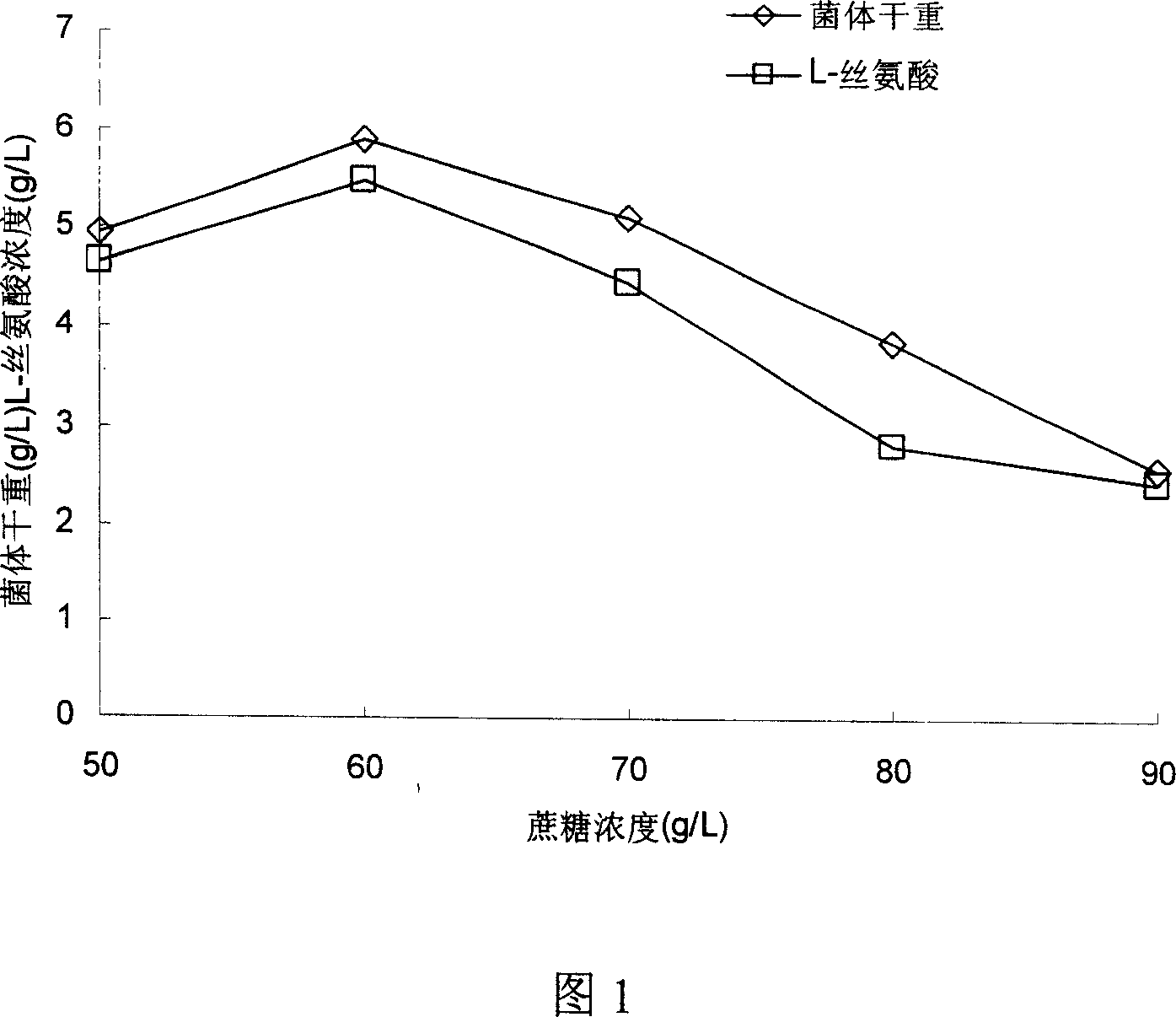Strain for production of L-serine and method for production of L-serine by using same
A technology of serine and Corynebacterium glutamicum, which is applied in the direction of microorganism-based methods, biochemical equipment and methods, bacteria, etc., can solve the problems of difficult process amplification and industrialization, etc., and achieve increased income and stable yield traits , good effect of genetic stability
- Summary
- Abstract
- Description
- Claims
- Application Information
AI Technical Summary
Problems solved by technology
Method used
Image
Examples
Embodiment 1
[0027] Example 1 Screening of strains with L-serine synthesis ability.
[0028] Collect soil samples below 15cm below the surface around the sugar factory. 1g soil samples are enriched in a conical flask (30mL / 250mL) of enrichment medium containing 50μg / mL nystatin in a reciprocating shaker at 30°C 110rpm / min. The sets were cultured for 3 days. Take 0.1 mL of the enriched bacterial suspension and spread it on the screening medium, use a sterilized filter paper sheet to copy the coated plate to a copy plate, and cultivate for 3 days. Use 0.3% ninhydrin in acetone solution to infiltrate the plate, and dry it at 105°C for 10 minutes to develop the color. Those that produce purple color circles are amino acid producing bacteria.
[0029] Pick the corresponding amino acid-producing bacteria from the copy plate, and perform preliminary screening in the fermentation medium by shaking tubes, one tube for each strain. After the cultivation, the content of L-serine in the fermentation...
Embodiment 2
[0034] Embodiment 2 selects the optimum carbon source type and concentration of the fermentation medium.
[0035] Using the fermentation medium in Example 1 as the basal medium, the glucose therein was replaced with carbon sources such as 80 g / L sucrose, fructose, lactose, maltose, starch, etc. The results are shown in Table 2. When glucose, sucrose or fructose were used as carbon sources, the yield of L-serine was higher; when lactose, maltose, and soluble starch were used as the only carbon sources, almost no L-serine was produced. Among them, when sucrose was used as carbon source, the yield of L-serine was the highest, which was 5.1g / mL.
[0036] Carbon source (80g / L)
L-serine (g / L)
Residual sugar (g / L)
Conversion rates(%)
glucose
sucrose
soluble starch
2.9
5.1
3.3
0
0
0
21.6
17.2
19.3
43.2
41.2
19.4
5.87
8.12
5.4
0
0
0
...
Embodiment 4
[0039] Example 4 VB 1 It has a great influence on bacterial growth and L-serine accumulation.
[0040] In the fermentation medium: sucrose 60g / L, corn steep liquor 10-30g / L, cottonseed powder 10-30g / L, (NH 4 ) 2 SO 4 20~50g / L,KH 2 PO 4 1.0~2.0g / L, MgSO 4 ·7H 2 O 0.5~1.0g / L, FeSO 4 ·7H 2 O 0.01~0.05g / L, MnSO 4 ·H 2 O 0.01~0.05g / L, biotin 0.08~0.15mg / L, CaCO 3 On the basis of 20g / L, add 50μg / L, 200μg / L, 500μg / L, 800μg / L of VB 1 , the ventilation rate of the fermenter is 2-3vvm, the stirring speed is 400-600 rpm, and the pH of the culture is within the range of 6-8. The results showed that 500μg / L was the optimal concentration, and the yield of L-serine could reach 6.0-6.4g / L. with and without VB 1 A comparative increase of about 20%.
PUM
 Login to View More
Login to View More Abstract
Description
Claims
Application Information
 Login to View More
Login to View More - R&D
- Intellectual Property
- Life Sciences
- Materials
- Tech Scout
- Unparalleled Data Quality
- Higher Quality Content
- 60% Fewer Hallucinations
Browse by: Latest US Patents, China's latest patents, Technical Efficacy Thesaurus, Application Domain, Technology Topic, Popular Technical Reports.
© 2025 PatSnap. All rights reserved.Legal|Privacy policy|Modern Slavery Act Transparency Statement|Sitemap|About US| Contact US: help@patsnap.com

